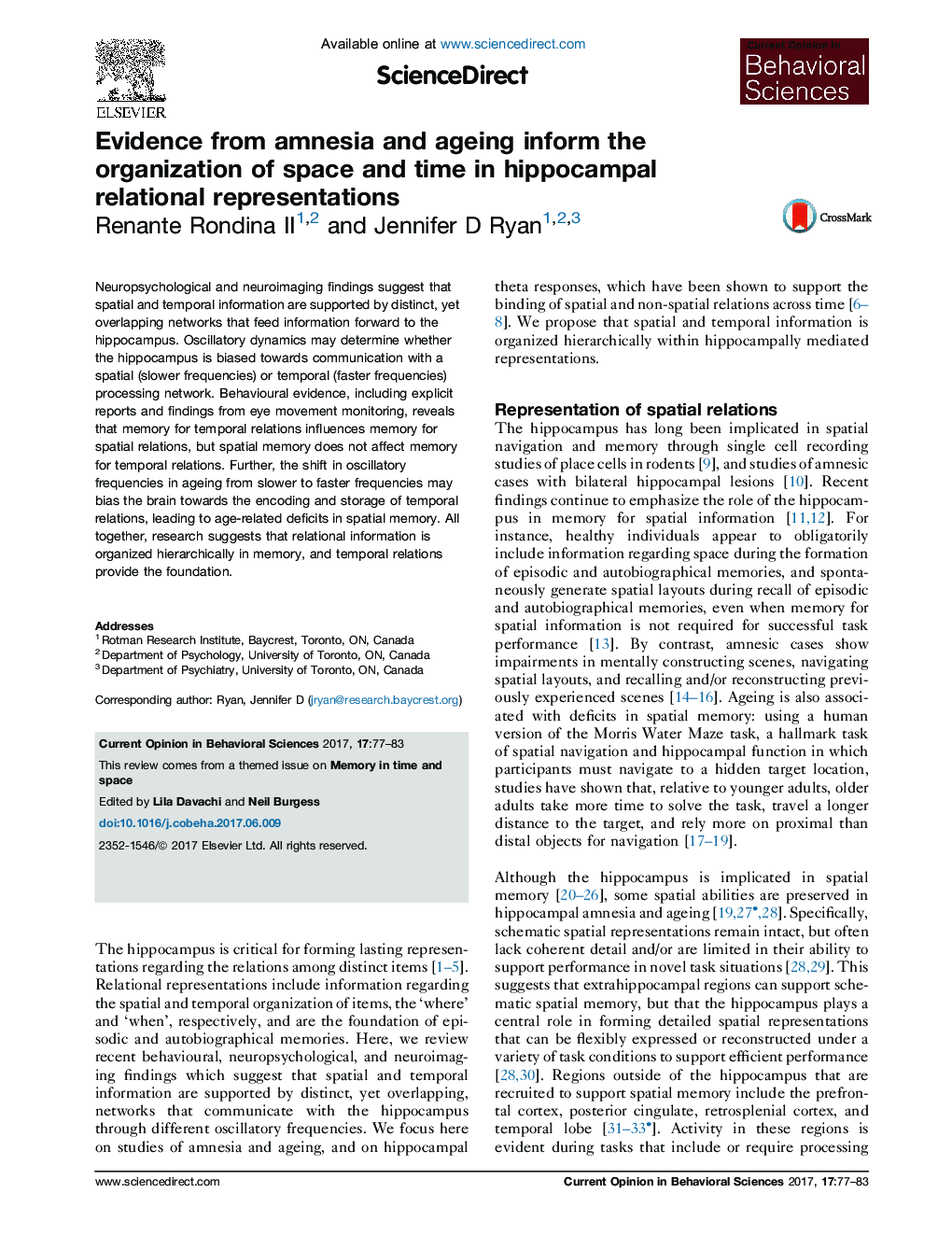| Article ID | Journal | Published Year | Pages | File Type |
|---|---|---|---|---|
| 5735768 | Current Opinion in Behavioral Sciences | 2017 | 7 Pages |
Abstract
Neuropsychological and neuroimaging findings suggest that spatial and temporal information are supported by distinct, yet overlapping networks that feed information forward to the hippocampus. Oscillatory dynamics may determine whether the hippocampus is biased towards communication with a spatial (slower frequencies) or temporal (faster frequencies) processing network. Behavioural evidence, including explicit reports and findings from eye movement monitoring, reveals that memory for temporal relations influences memory for spatial relations, but spatial memory does not affect memory for temporal relations. Further, the shift in oscillatory frequencies in ageing from slower to faster frequencies may bias the brain towards the encoding and storage of temporal relations, leading to age-related deficits in spatial memory. All together, research suggests that relational information is organized hierarchically in memory, and temporal relations provide the foundation.
Related Topics
Life Sciences
Neuroscience
Behavioral Neuroscience
Authors
Renante II, Jennifer D Ryan,
